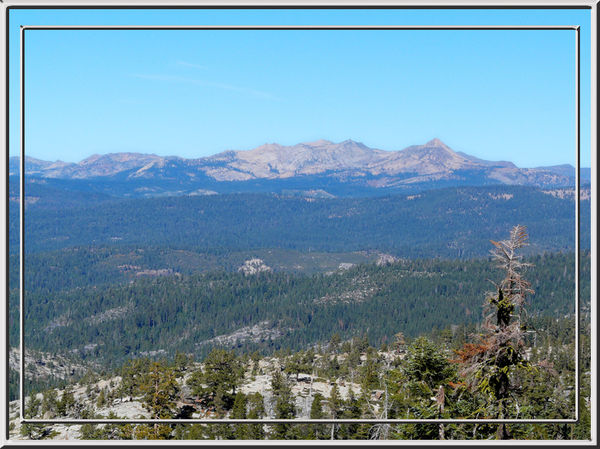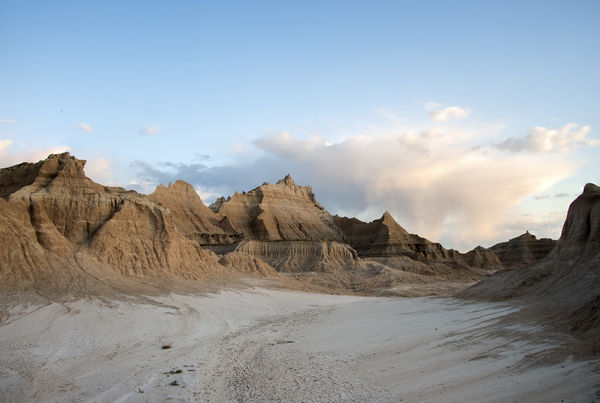Starting a discussion on HDR
Jun 3, 2014 16:23:08 #
Thank you - this is one of the two vista points on Hwy 88 that I struggle with getting landscape and panoramas of.
Luckily I drive this road often.
Here is a color HDR of the same location.
Harvey
Luckily I drive this road often.
Here is a color HDR of the same location.
Harvey
mechengvic wrote:
HDR needs work but your image is very nicely composed, your eye is drawn to all parts of the landscape.

Jun 3, 2014 16:26:13 #
Jun 3, 2014 17:36:28 #
I am not an artist - I am a photographer who likes to get my photos a clear and as duplicate as what my eyes see.
However I do see some great works coming out of HDR and other PP works that have been artistically manipulated that I like also.
However I do see some great works coming out of HDR and other PP works that have been artistically manipulated that I like also.
RonH wrote:
My work description is focus stacking but you can ... (show quote)
Jun 4, 2014 00:45:53 #
It took me a few years to get to the point I am now with HDR, and my tastes keep changing. I think now that many of my images are too saturated, but I'm generally happy with the tonality I am achieving. I do like a somewhat "painterly" effect, which I know is not to everyone's taste. The nice thing about software is that there is a wide range of effects that can be achieved, from very photorealistic to bas-relief grunge.
I have been lately exploring "extreme" HDR, with very high dynamic range scenes--using 9 and even 12 EV brackets. Night HDR is also largely unexplored. Photomatix's manual deghosting makes it possible now to do HDR of scenes with moving elements.
Most of my latest work is HDR. I invite everyone to have a look at my galleries at toby-marshall.com. If anyone is interested I am happy to share what I have discovered in terms of technique over several years of pretty intensive work with HDR.
I have been lately exploring "extreme" HDR, with very high dynamic range scenes--using 9 and even 12 EV brackets. Night HDR is also largely unexplored. Photomatix's manual deghosting makes it possible now to do HDR of scenes with moving elements.
Most of my latest work is HDR. I invite everyone to have a look at my galleries at toby-marshall.com. If anyone is interested I am happy to share what I have discovered in terms of technique over several years of pretty intensive work with HDR.
Jun 4, 2014 01:02:09 #
Over the past week or so, I've seen some amazing HDR images, and I've enjoyed reading shooting techniques. On that point, I'd like to ask the question. How many of you, who have done HDR, and do so with bracketed images AND hand-holding your camera? And the results?
Jun 4, 2014 01:10:13 #
tom hughes
Loc: Phila Pa
agreed, that he spent hours, manipulating his negatives to achieve the dynamic ranges that he produced Today a Mark III can process three different HDR exposures, in camera, in about 10 seconds.
Jun 4, 2014 01:40:50 #
kymarto wrote:
It took me a few years to get to the point I am no... (show quote)
Thanks for sharing your website, I enjoyed it very much.
Jun 4, 2014 04:57:36 #
Retina
Loc: Near Charleston,SC
jwt wrote:
After experimenting with HDR for several days and doing some research on the subject an idea occurred to me. One of my photo heros, Ansel Adams used a system that I believe he called zone exposure. Now after looking at several of his prints online, it strikes me that the results he achieved with his system is eerily similar to today's HDR. Agree or Disagree please comment and share your reasons for your choice. Thanks to all - Regards Jim
After scanning the thread I did not see a mention of water bath development. Pardon me if it was already covered. It is the closest thing to HDR done with film that I can recall. It picks up where the zone system leaves off. With this technique, the developing film is lifted from the developer and lowered into water. This limits the amount of developer available to the emulsion. Developer clinging to highlight areas on the emulsion is consumed in the reaction to reduce silver while the lesser exposed areas continue to develop. The film can be re-dipped in developer and back in water again to "recharge" the sheet with fresh developer if called for. This technique greatly limits the development of the highlights and can produce a stunning range of exposure latitude. I rarely shot cut film and tried this only once or twice. I wimped out and just "overexposed" two or three stops and cut development time accordingly, usually shooting Tri-X at ASA 50 or Plus-X at ASA 25. This also drastically reduced grain. Actually, the standard ASA ratings given to different films were just a suggestion in order to get an acceptable amount of speed from the various films from any given film. Kodak's Tri-X worked best at ASA 25 (or was it 50?) according to one extensive set of tests done by Modern Photography or one of the other publications. (Another member with B/W hair may recall this.) Check out a real photographer's work that likely includes some water bath negatives: Jukka Vuokko, especially night bridge print, #17 of 32, from the current collection on the main web page.
Jun 4, 2014 07:16:42 #
Retina wrote:
After scanning the thread I did not see a mention ... (show quote)
Pre-exposure wasn't mentioned either.
--Bob
Jun 4, 2014 09:36:02 #
Retina
Loc: Near Charleston,SC
rmalarz wrote:
Pre-exposure wasn't mentioned either.
--Bob
--Bob
Thanks, Bob. I forgot about that one. It got the exposure started so the exposure for the photograph didn't have to go so far to register in the shadow areas. (When I first read about back-lit sensors, I thought that's what it was talking about, using a bit if internal light to kick-start the sensors for the shadow areas. How silly of me.)
Dodging and burning are a separate thing, though it is certainly a form of HDR technique post-negative. The real trick was stretching the latitude in the film. If the shadows aren't there or the highlights are blocked up, the darkroom can't save it. There was Victor's Intensifier, but it may have affected all of the negative, not just the thin parts.
I like the other contributor's notes about how the brain does HDR all the time without even realizing it. Non-HDR shooting is really more artificial in a sense than high amounts of HDR. -Dave
Jun 4, 2014 10:01:28 #
HDR is not even modern. I visited a civil war photography exhibit several months ago, and saw some HDR photos done by George Barnard in the 1860's. He realized way back then that if you capture the clouds the land is too dark and if you capture the land details the clouds go too light. So he did what we do: he blended exposures. Using big plates. We are lucky.
http://www.luminous-lint.com/app/contents/fra/_photographer_george_n_barnard_composites_01/
http://www.luminous-lint.com/app/contents/fra/_photographer_george_n_barnard_composites_01/
Jun 4, 2014 11:02:58 #
minniev wrote:
HDR is not even modern. I visited a civil war photography exhibit several months ago, and saw some HDR photos done by George Barnard in the 1860's. He realized way back then that if you capture the clouds the land is too dark and if you capture the land details the clouds go too light. So he did what we do: he blended exposures. Using big plates. We are lucky.
http://www.luminous-lint.com/app/contents/fra/_photographer_george_n_barnard_composites_01/
http://www.luminous-lint.com/app/contents/fra/_photographer_george_n_barnard_composites_01/
Gustave Le Grey did the same thing. Emulsions were nearly only sensitive to blue light. Therefore when you exposed for a sky the foreground would be too dark because the sky contained so much blue light. Combining plates allowed for a foreground exposure of subject matter with very little blue and then another plate for the sky.
Jun 4, 2014 11:02:58 #
elliott937 wrote:
After looking at Toby Marshall's work, it is probably a bad idea to post examples of anything I've ever done!Over the past week or so, I've seen some amazing HDR images, and I've enjoyed reading shooting techniques. On that point, I'd like to ask the question. How many of you, who have done HDR, and do so with bracketed images AND hand-holding your camera? And the results?
My first HDR attempt was to try to capture a tourist visit to the Grand Canyon. As a tourist, our visit was during middle of a hazy day. At the time, I was also experimenting with using video editing to make slide shows. My travel camera, a Sony RX100, will only auto bracket by 2/3 of a stop. Some shots were on a tiny tripod, many were hand held.
My goal was to avoid any "painterly" effect, but to add back some of the Grand Canyon brilliance that I could see but would be flat from the haze in photos.
I used Lightroom and NIK HDR Effects Pro 2 that has an aligning option for hand held shots.
See for yourself: http://vimeo.com/64474485
Jun 4, 2014 13:02:25 #
RonH
Loc: Shoreview MN
Attached is an image that used the focus stacking technique. Some people think it looks some what like an HDR image.
This was taken this year at the Hog's Badland get together.
Ron H
This was taken this year at the Hog's Badland get together.
Ron H
Jun 4, 2014 13:05:40 #
RonH wrote:
Attached is an image that used the focus stacking technique. Some people think it looks some what like an HDR image.
This was taken this year at the Hog's Badland get together.
Ron H
This was taken this year at the Hog's Badland get together.
Ron H
:thumbup: :thumbup: :thumbup:
If you want to reply, then register here. Registration is free and your account is created instantly, so you can post right away.








